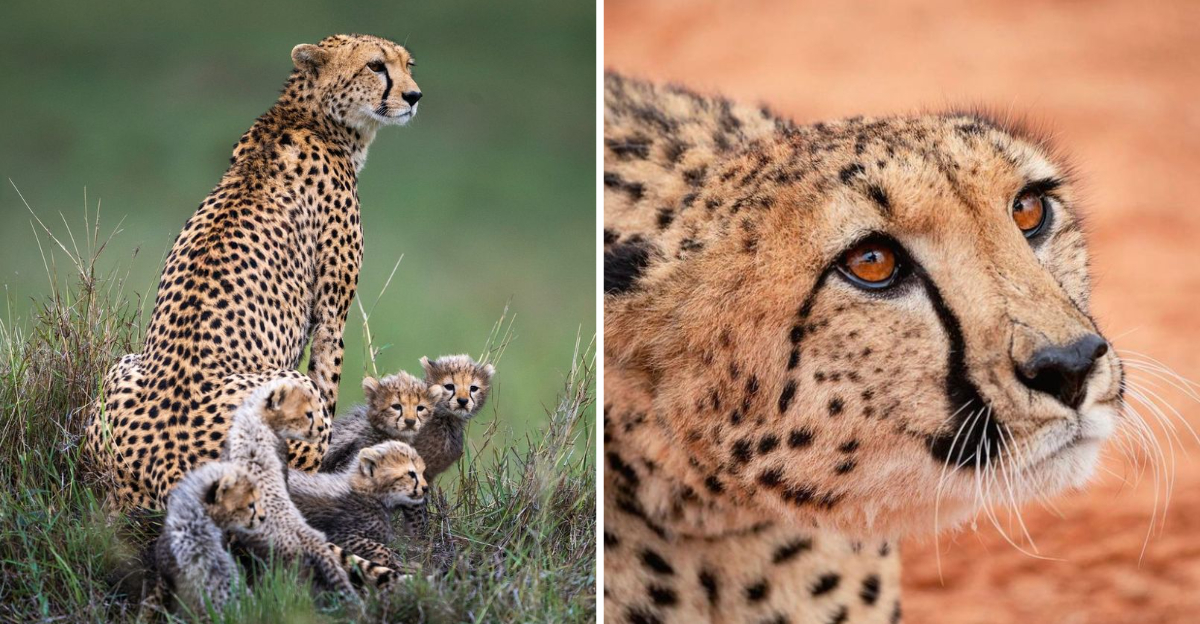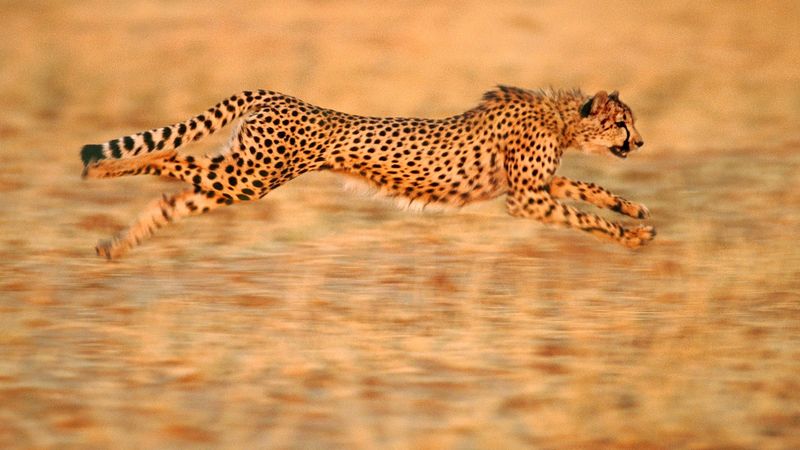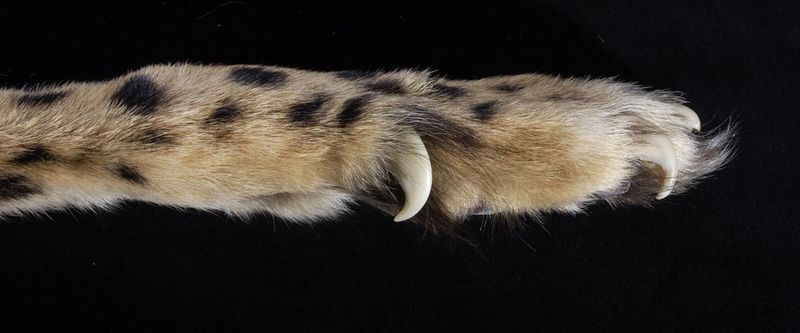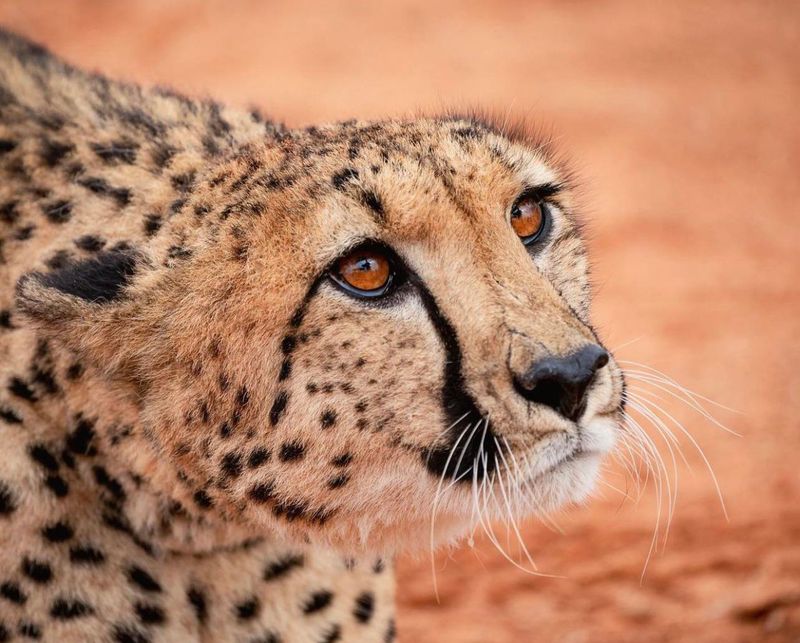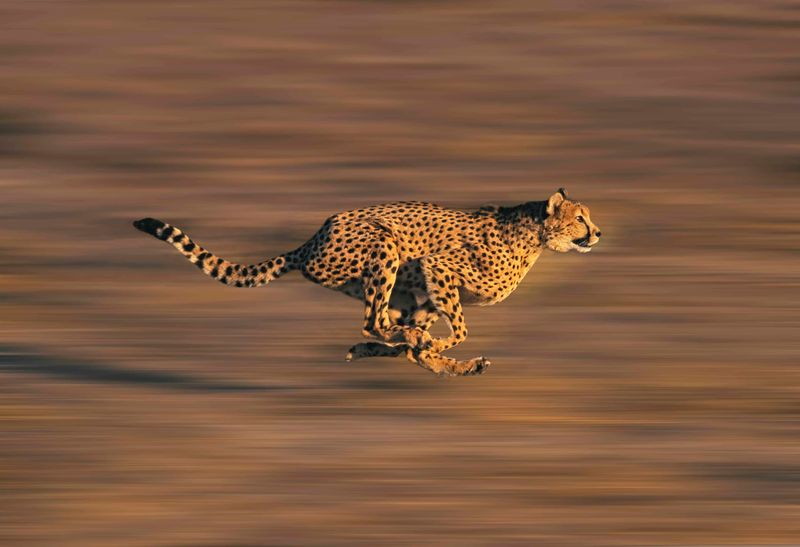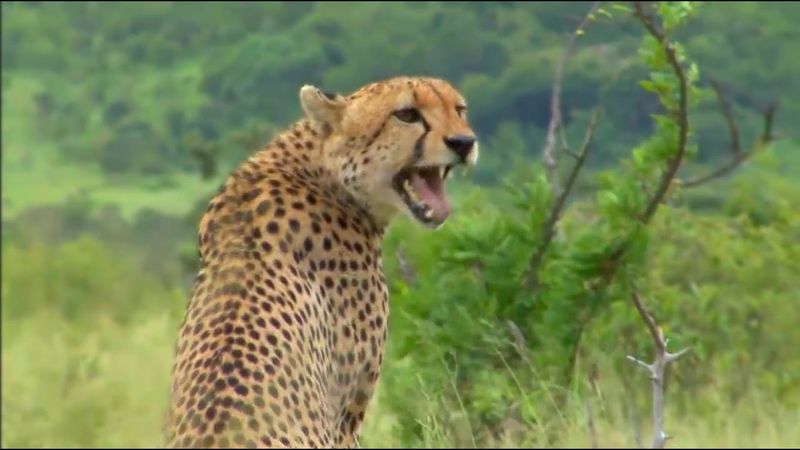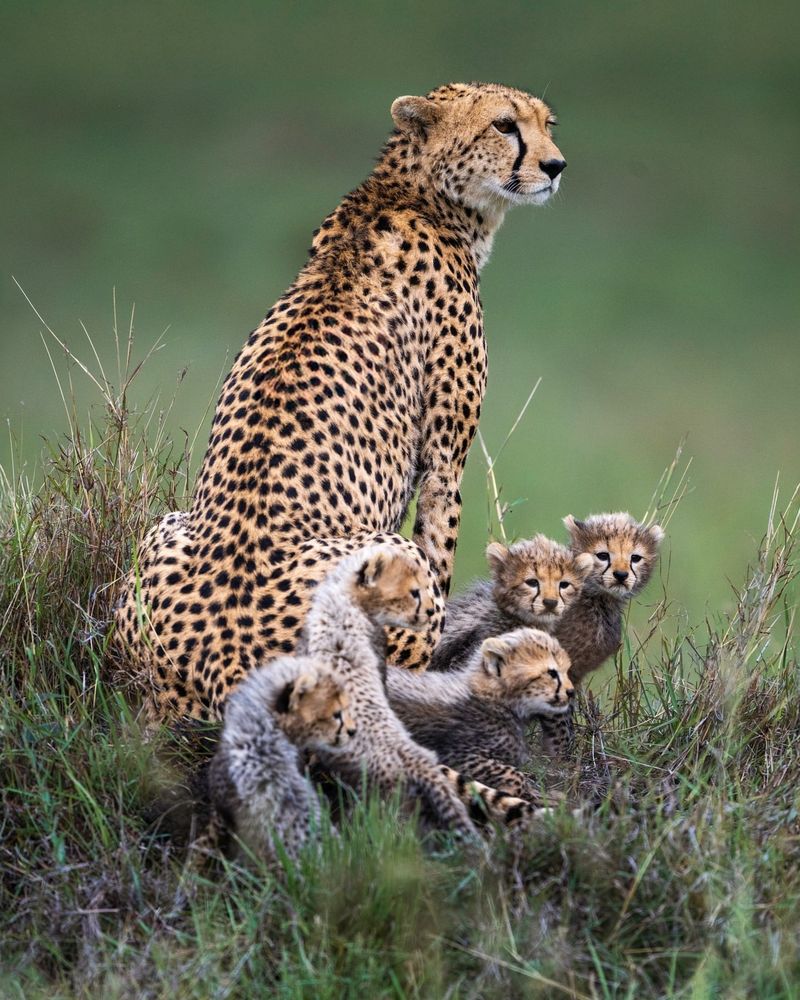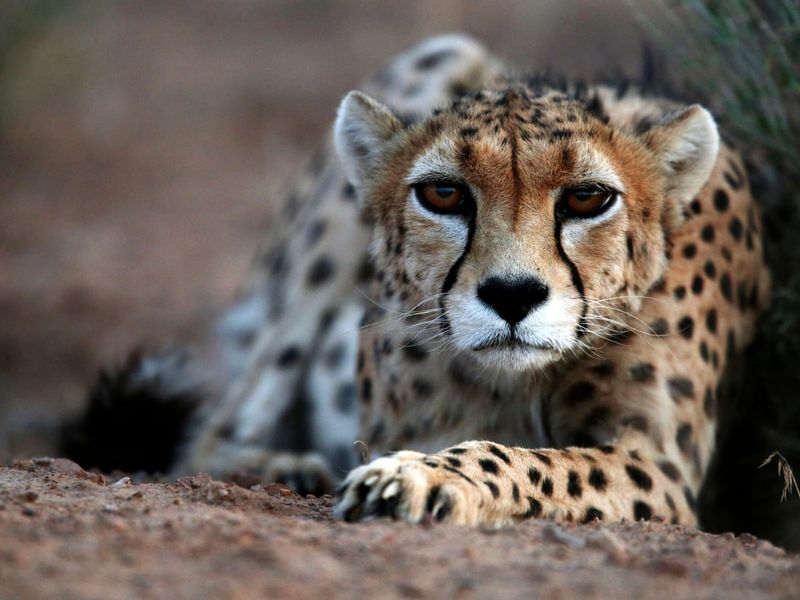📖 Table of Content:
Cheetahs, the unparalleled speedsters of the animal kingdom, boast a suite of unique traits that distinguish them from their feline counterparts. While most big cats are revered for their strength and stealth, cheetahs are celebrated for their agility and precision. These remarkable creatures have evolved with specialized features that not only enhance their hunting prowess but also ensure their survival in the challenging environments they inhabit. This exploration highlights seven distinctive traits that make cheetahs extraordinary among big cats.
1. Speed and Acceleration
With a heart that races as fast as a cheetah’s legs, these big cats redefine speed with grace. Clocking speeds of up to 70 mph, cheetahs are the fastest land mammals. Their lightweight frames and flexible spines allow them to stretch their bodies in a remarkable display of athleticism. In just seconds, they can accelerate from a standstill to highway speeds, a feat unmatched in the wild. Their speed isn’t just for show, though; it’s a critical tool for survival, allowing them to outpace prey in the vast savannas.
2. Non-Retractable Claws
Imagine the roar of a racetrack as a cheetah tears across the landscape. Unlike their feline relatives, cheetahs sport semi-retractable claws, akin to athletic spikes, which provide unmatched traction. These claws are always ready for action, helping to grip the earth with precision during high-speed chases. This unique adaptation ensures cheetahs maintain control while sprinting, turning the savanna into their personal racetrack. It’s this grip that gives them the edge in acceleration and cornering, making them fearsome hunters of the plains.
3. Distinctive Facial Markings
With tear-streaked eyes, cheetahs wear a mask of perseverance. These iconic black facial stripes run from the eyes to the mouth, playing a crucial role in reducing sun glare. This adaptation allows cheetahs to hunt efficiently during daylight hours, their preferred time for prowling the plains. Beyond functionality, these markings contribute to the cheetah’s mystique and beauty, blending seamlessly with the spotted coat. The combination of stripes and spots provides effective camouflage, perfect for stalking prey in the tall, golden grasses of the savanna.
4. Specialized Respiratory System
A breath of life fuels the cheetah’s relentless pursuit. Their respiratory system is a marvel of nature, equipped with large nasal passages and expanded lungs. These adaptations enable efficient oxygen intake and circulation, critical during high-speed chases. As they dash across the savanna, their hearts pump vigorously, supporting their sprinting prowess. This specialized design not only boosts their speed but also sustains it over short distances, making the cheetah a master of the chase. It’s a symphony of biology and agility working in perfect harmony.
5. Unique Vocalizations
Talk of the savanna, cheetahs communicate with a language all their own. Unlike other big cats, they don’t roar; instead, they chirp, purr, and growl. These sounds serve various purposes, from maintaining contact with their young to signaling distress. The chirping, reminiscent of a bird, is particularly unique, often used between mothers and cubs. This vocal repertoire adds another layer to their already intriguing nature. Every sound is a testament to their adaptability and social complexity, echoing across the sunlit plains.
6. Solitary Nature
In a world of solitude, female cheetahs reign supreme. These solitary hunters roam the grasslands alone, except when nurturing their cubs. Their independence is a hallmark of survival, allowing them to focus solely on the task of hunting and raising the next generation. In contrast, male cheetahs often form coalitions, typically with siblings, to secure territory. This solitary life demands resilience and adaptability, with each cheetah carving its path across the land. It’s a tale of survival written in the vastness of the savanna.
7. Vulnerable Status
Silent cries echo as cheetahs face a precarious future. Their dwindling numbers are a stark reminder of the challenges they face, from habitat loss to human-wildlife conflict. This vulnerability is compounded by their specialized nature, making adaptation difficult in rapidly changing environments. Conservation efforts are crucial to ensuring their survival, drawing attention to their plight and the need for sustainable solutions. The cheetah’s story is one of resilience and vulnerability, a call to action to preserve their place in the wild before it’s too late.
